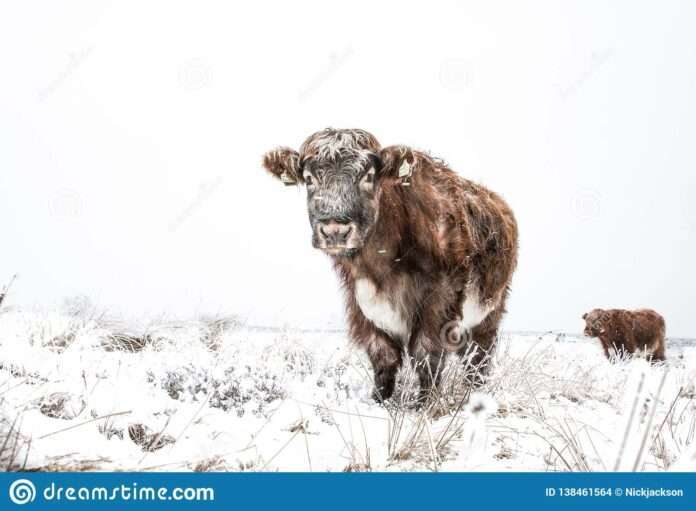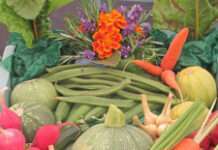Late winter storms can cause challenges for cattle producers
MANHATTAN, Kan. – A Kansas State University beef cattle specialist is urging the state’s producers to continue monitoring their cattle’s condition, especially during periods when Mother Nature sends her winter chill.
Justin Waggoner, a beef systems specialist with K-State Research and Extension, said producers are often ready to deal with heat stress during the summer, but cold stress during the latter stages of winter can also be challenging.
“Cattle are very robust creatures; they are able to withstand a wide range of temperatures,” Waggoner said. “But January and February are often our most extreme temperatures in Kansas, and that can certainly have an impact on cattle.”
Cattle are most comfortable when they are in what is known as the thermoneutral zone, a range of temperatures where they are not experiencing cold or heat stress.
Waggoner said a cow’s condition going into a cold period will effect how the animal can withstand stress.
“If we have a cow that is in good condition, she is going to be able to withstand colder temperatures better than a cow that is exceptionally thin,” he said. “If we take a cow that is in good condition and has had adequate time to grow that winter hair coat, that animal can withstand some fairly cold temperatures. Typically, they won’t experience cold stress until the ambient temperature (the ‘real-feel’ temperature) reaches 18 degrees Fahrenheit.”
Rain, snow and wind complicate the situation, Waggoner added.
“When you wet that hair down, it reduces its ability to trap air and insulate the cow,” he said. “With a wet coat, a cow can experience cold stress even at 60 degrees F.”
Waggoner said cold stress increases the cow’s energy requirement — not protein which is a common misconception.
“One thing we see producers do when we get a cold weather event is they roll out hay,” Waggoner said. “What I recommend is utilizing hay that is slightly better quality than the forage those cattle currently are grazing. For example, if they had been turned out on milo or corn stalks, then a moderate quality grass hay will be higher quality than those stalks they were on.”
Waggoner also suggested other high quality forages, such as alfalfa, may be used as a supplement.
“In some regions of the country, it’s not uncommon for producers to use concentrates such as corn or byproducts as supplements during the winter. Producers might add 1 to 2 pounds of corn or byproduct feedstuffs under conditions of a storm front, in combination with some of the other things I’ve mentioned.”
For more guidelines on dealing with cold stress, producers are encouraged to contact their local K-State Research and Extension agent.
Daily updates on weather conditions – including an animal comfort index – is available online from the Kansas Mesonet. That site allows producers to find conditions specific to their location.
FOR PRINT PUBLICATIONS: Links used in this story
K-State Research and Extension local offices, https://www.ksre.k-state.edu/about/stateandareamaps.html
Kansas Mesonet, https://mesonet.k-state.edu
K‑State Research and Extension is a short name for the Kansas State University Agricultural Experiment Station and Cooperative Extension Service, a program designed to generate and distribute useful knowledge for the well‑being of Kansans. Supported by county, state, federal and private funds, the program has county extension offices, experiment fields, area extension offices and regional research centers statewide. Its headquarters is on the K‑State campus in Manhattan. For more information, visit www.ksre.ksu.edu. K-State Research and Extension is an equal opportunity provider and employer.
For more information:
Justin Waggoner
Story by:
Pat Melgares
785-532-1160





